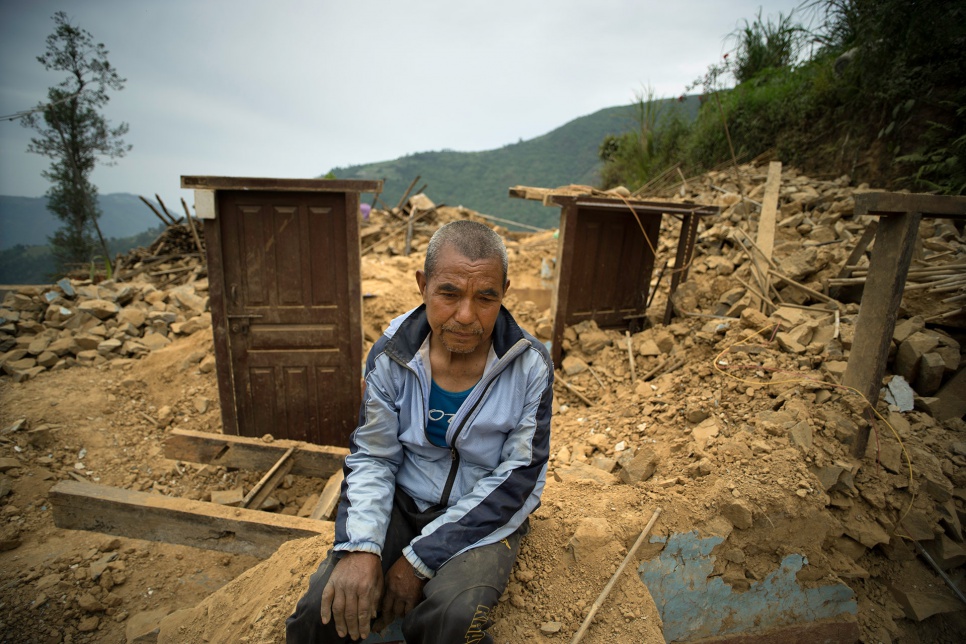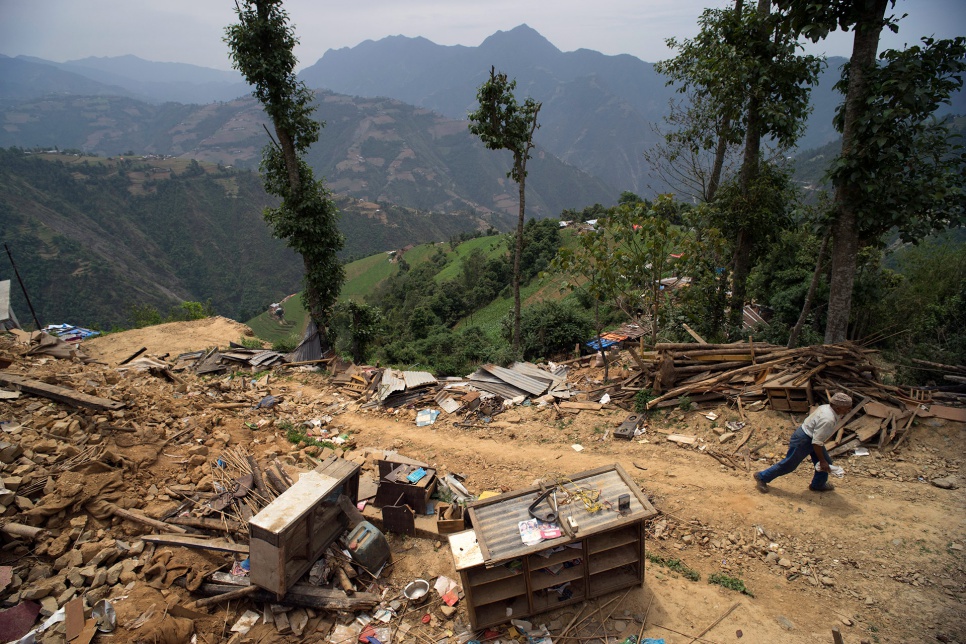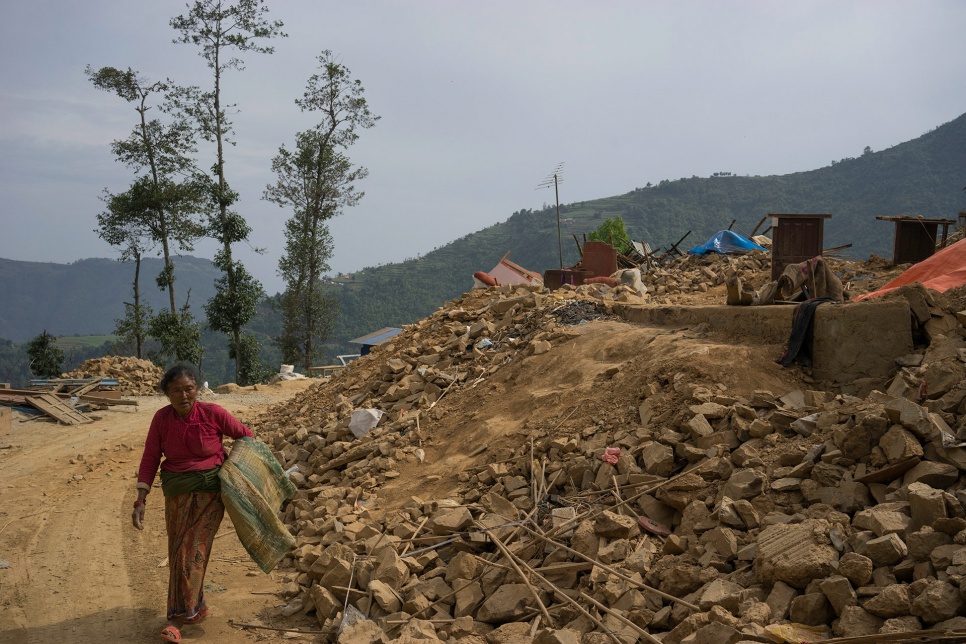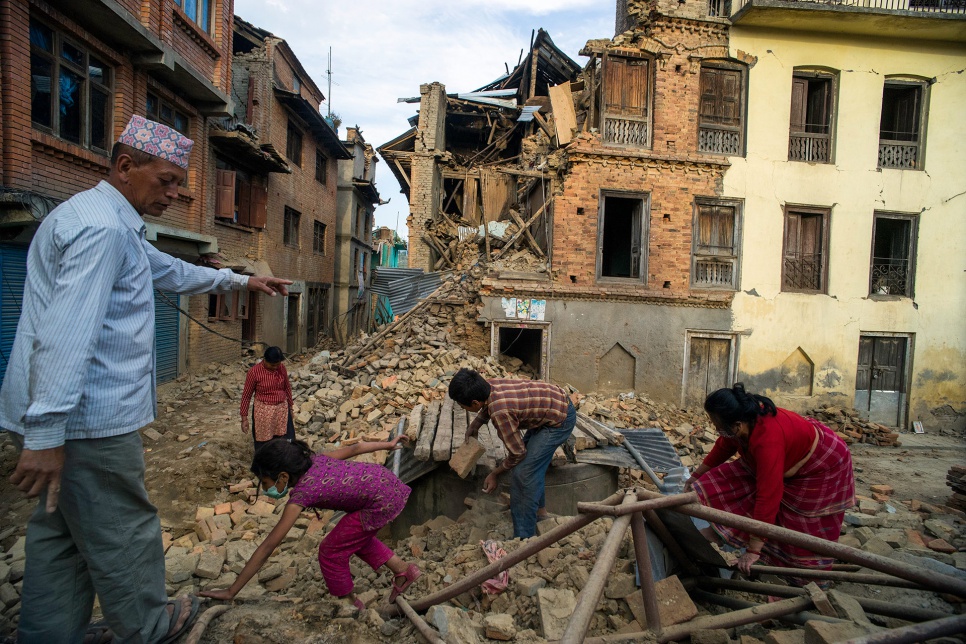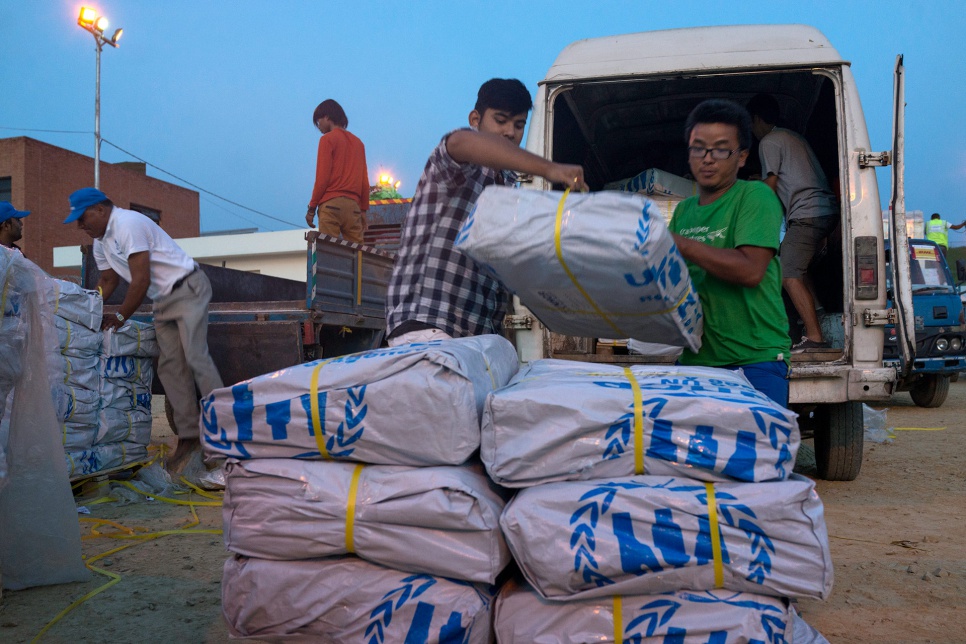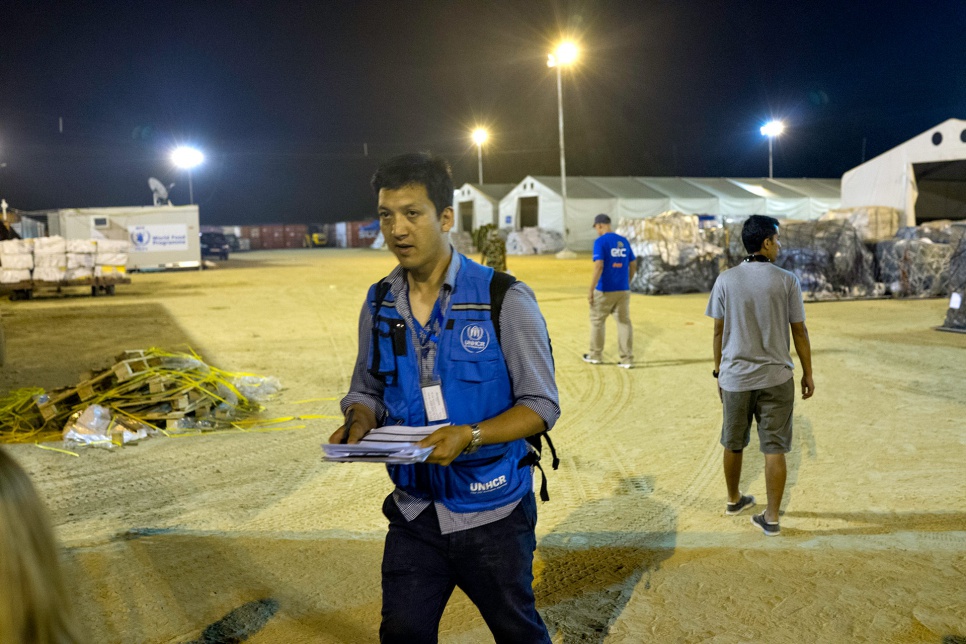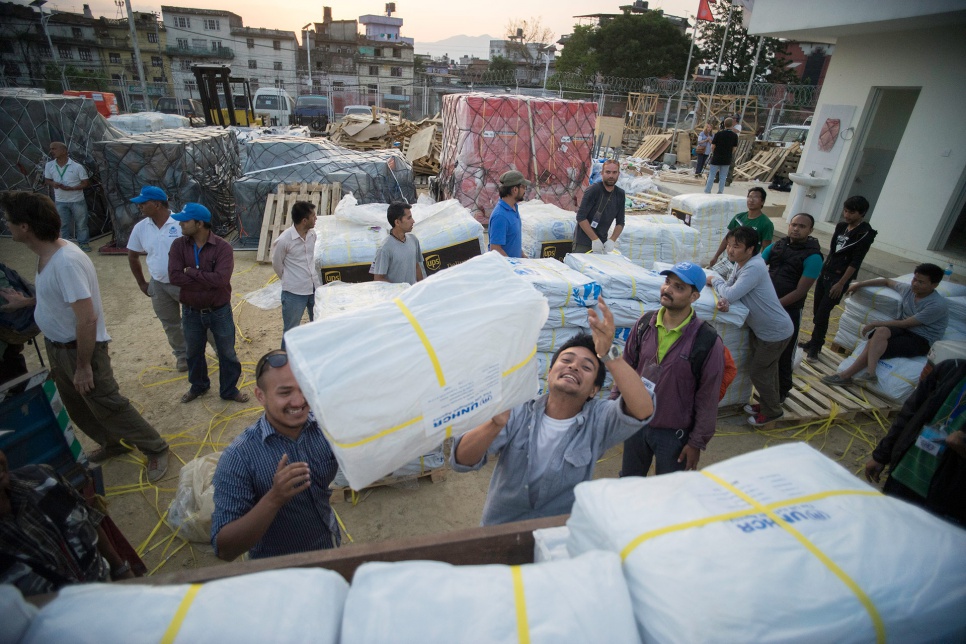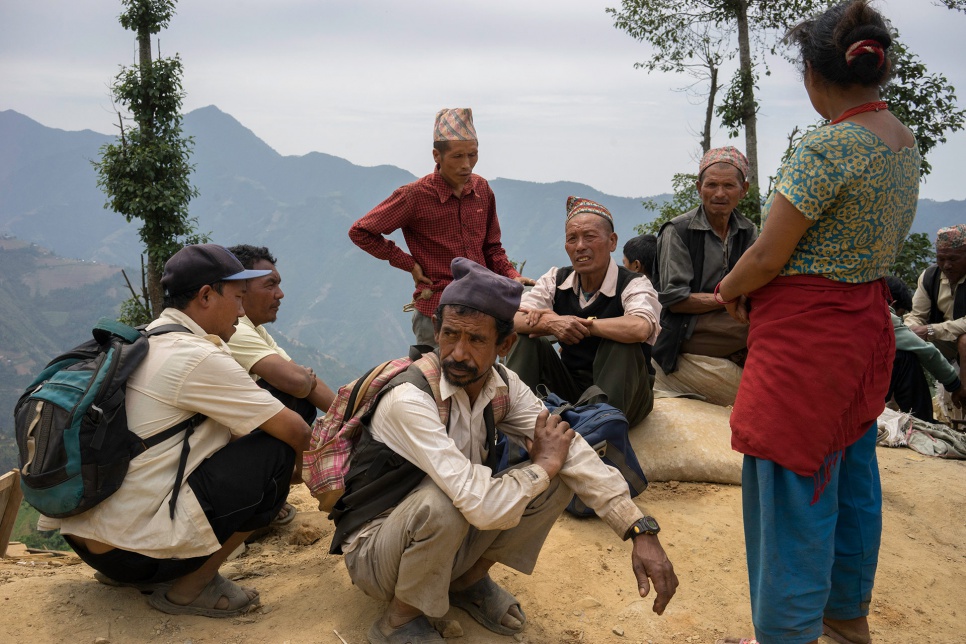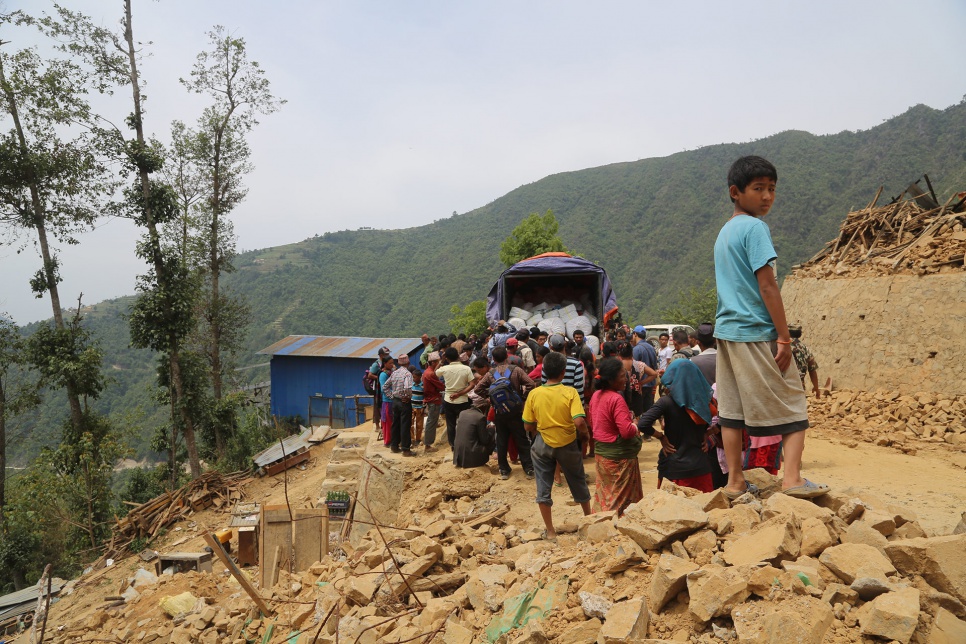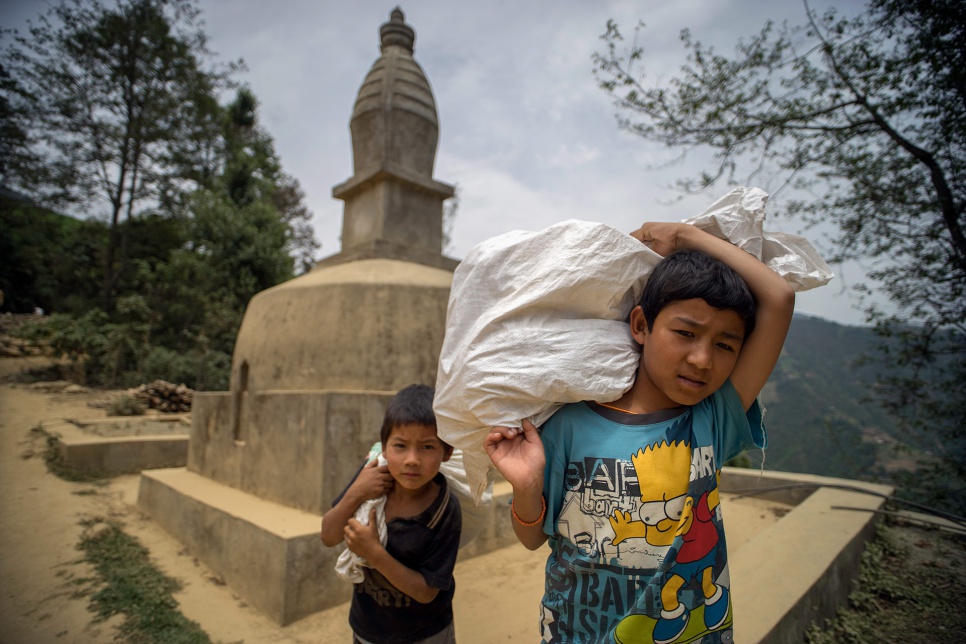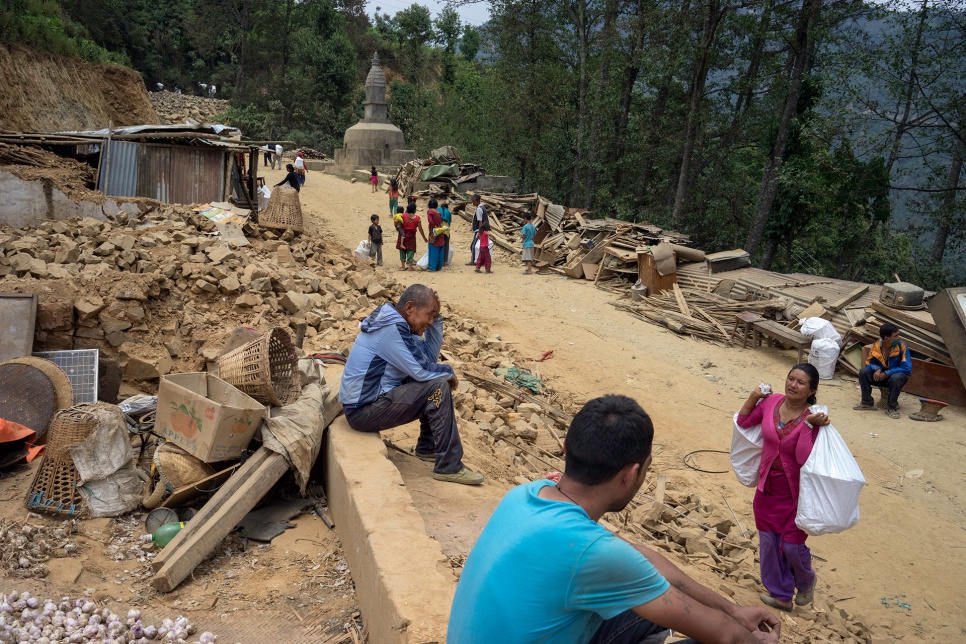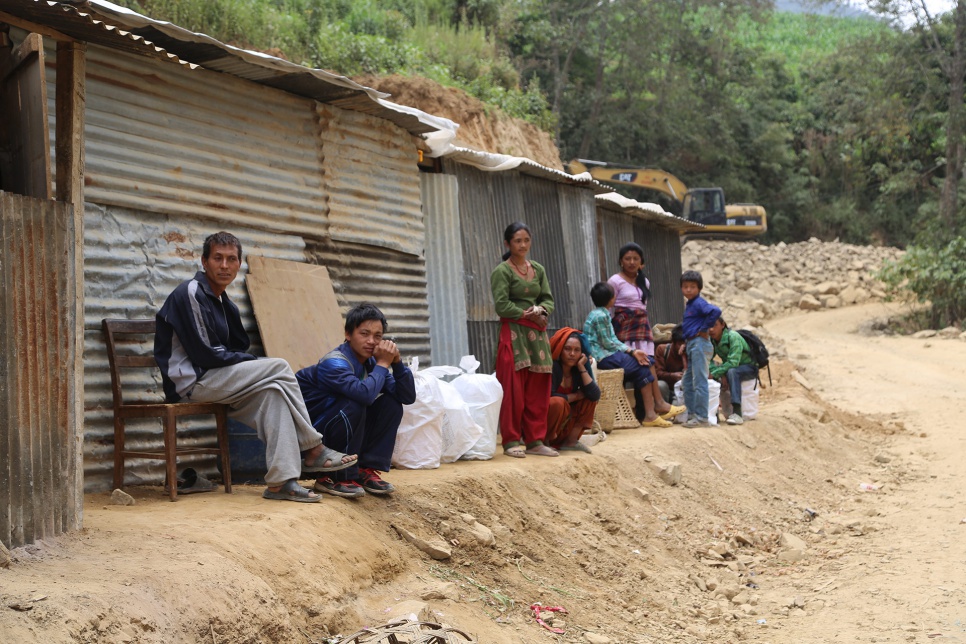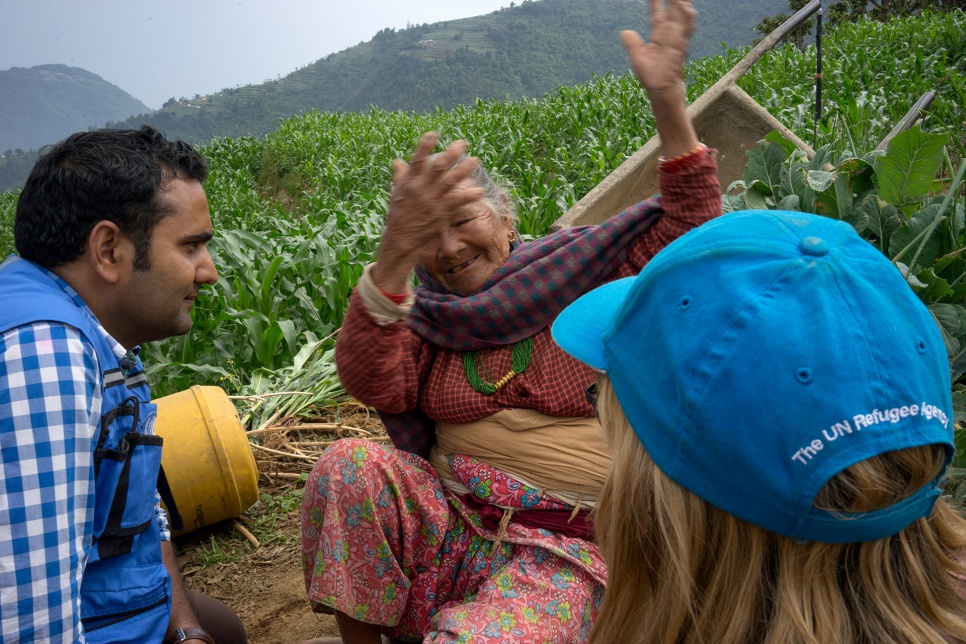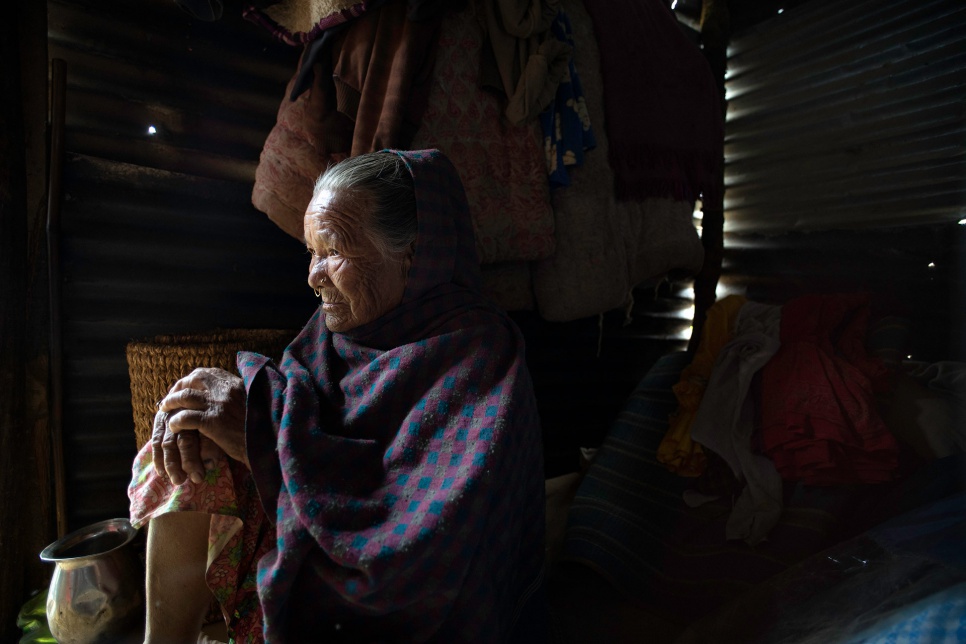After the earthquake, Nepal braces for monsoons
Millions lost their homes when the earthquake rocked Nepal last month. As rainy season nears, UNHCR and its partners race to provide shelter.
Antari Maya Jimba, 81, sits in her family's fields in Jhankridanda, Nepal.
© UNHCR/Brian Sokol
Dhan Bahadur Tamang, 66, built his two-storey house 35 years ago on a ledge just above a winding dirt road. It is only three hours by car from Nepal's capital, Kathmandu, but so isolated by the nearly vertical mountains that it feels like another world.
From the front rooms, his view spread out over a steep terraced valley of wheat and potato fields encircled by layers of even steeper mountains. Travellers who stopped at the local teahouse often commented on the spectacular location. Today only three door frames remain upright, keeping watch over piles of stone and brick rubble like a trio of ghosts.
Just before noon on 25 April, a 7.8 magnitude earthquake tore through Nepal, flattening thousands of villages and towns and seriously damaging Kathmandu. More than 8,600 people lost their lives (including 150 killed in a massive aftershock on 12 May), and over 500,000 families lost their homes. For Nepal, a small and desperately poor country, it is a disaster of epic proportions, especially for its farmers.
The statistics from Jhankridanda, Dhan Bahadur's rural village to the south of Kathmandu, mirror those of countless other communities: 3,000 residents, 447 houses, of which 99 per cent collapsed. Eight people died, 30 were injured. Of the 10 schools, only one is still standing. Large numbers of livestock, often kept in traditional mud-brick shelters, were buried alive. Dhan Bahadur lost his goat and two of his three buffaloes.
"My family is safe. That is the only thing that matters," he said. "Life is like this. I cannot change what happened."
With the heavy monsoon rains just weeks away, getting shelter and basic food to the thousands of isolated villages is a race against time. Another 7.3 earthquake on 12 May further devastated villages in northern and eastern Nepal. Landslides blocked roads, phone lines went dead. Despite its proximity to Kathmandu, it took almost a month for Jhankridanda to receive 100 tarps, rice, plastic buckets and basic hygiene materials. The middle of the road was the only flat area for a distribution point. With about 50 other villagers, Dhan Bahadur had been waiting for hours on the roadside to pick up his UNHCR tarp. While his grandchildren giggled with delight over the hygiene kit, he immediately carried the tarp over to his 28-year-old son, Raj Kumar Tamang, for help to lay it on their temporary roof.
"Tonight let it rain, we are not going to get wet," he announced with a glimmer of a smile. Right on the edge of the road, home for his 10-person family is a small, leaky and dark one-room corrugated iron shack made from salvaged roof material.
Delivering aid in the wake of a natural disaster always has its challenges. But Nepal's are of a different magnitude. A landlocked country, relief aid has few ways in. The land route consists of a couple of winding narrow roads from India where the levying of customs duties delayed goods at first. The road from China is still blocked by landslides almost a month since the first quake. The country's only international airport, in Kathmandu, has only one runway and nine parking bays. Before the quake, it was already bursting at the seams, with officials saying the runway was not capable of handling a large-bodied 747. Since the first earthquake in April, the airport is open 24 hours a day, and its rough runway has been torn and repaired multiple times as huge American C-17s, Boeing 747s and Russian Antonovs bring in relief supplies.
"This will go on for months and years. Some people's lives will change radically."
But the lack of space and the shortage of forklifts to move the palettes through three staging areas mean that it can take 12 hours or more to get the relief aid out of the airport. Yet the hardest part is getting the aid to isolated villages. The earthquake, with its more than 230 aftershocks during the first three weeks, cracked open mountain sides, weakening the earth and triggered massive landslides that blocked both the few paved roads and the terrifyingly narrow dirt tracks carved out of vertical hillsides. As the houses collapsed they not only buried people and animals but all the farmers' stored foods, cooking utensils and farming tools. For these subsistence farmers, not only is their food running out, but their ready-to-harvest wheat crops will be lost, further burying them in poverty. "This relief operation is not a couple-of-weeks affair," explained Craig Sanders, UNHCR's representative in Nepal. "This will go on for months and years. Some people's lives will change radically."
To speed up relief delivery and access far flung areas, UNHCR is using local Nepali partners to assist in delivering 42,475 tarps and 8,032 solar lanterns. The lanterns are prioritized for women-led families, Dalits and families who have lost relatives. It is Nepal's silent revolution: Nepalis from all levels of society – almost all volunteers, both here and overseas – are self-organizing, using their network of people in specific districts and communities and delivering aid fast and efficiently, village by village. The psychological value of this aid should not be underestimated. A great many villages, in places that may not have been reached for several more weeks in regular large distributions, now know that they are not alone.
"We need to provide them with more than just a drop of aid. We have to bring in much more. But it is so hard to get it out there."
On a recent trip with Yellow House, a volunteer organization based in Kathmandu, Deepesh Das Shrestha, a UNHCR field officer, drove eight hours on a paved road to the eastern town of Bharabise. That was the end of the cell phone network. The next morning the team switched to smaller, 4X4 pickup trucks for a two-hour drive on a dirt track bordering a precipice. To get to the village of Gumthang, with its 180 households, he then climbed on all fours across a landslide and walked uphill another 45 minutes. There was no government presence, and no relief aid had reached the village. Yellow House, also known as the Himalayan Disaster Relief Volunteer Group, formed three days after the April earthquake. Through their contacts at a nearby adventure mountain resort called Borderlands, which in turn had done a survey of local villages, its members had received a list of every family in the village. They knew that almost every house had been destroyed and that 34 people had died. They also knew that a dozen other villages were just as desperate, but too far away to benefit from Gumthang's initial assistance.
"People won't walk eight hours each way through the mountains just for a few bags of rice," said Nayantara Gurung Kakshapati, 33, the unofficial leader at Yellow House, who describes her anarchic group of volunteers as "a collective". "We need to provide them with more than just a drop of aid. We have to bring in much more. But it is so hard to get it out there."
For now, the constant fear of another earthquake is on everyone's mind. It's a sickening dread that seeps into conversations, that delays plan making in the villages, that is keeping a country on edge. In Jhankridanda, Antari Maya Jimba, an 81-year-old great-grandmother, is anxious to have her story heard. Unable to walk except half bent over and with the help of a stick, she was caught under the falling walls of the family home. Her grandson, Jagat Thing Tamang, 42, pulled her out of the debris.
Sitting in the dirt by a hillside cornfield, she throws her body backwards and sideways to mimic the power of the earth, her rough, wrinkled hands grabbing an invisible wall. "Everyone ran into the fields but I couldn't because I can't walk," she said pointing at her legs. "I can't walk, but the house was cracking and all I had was fear."

